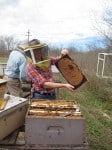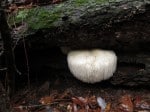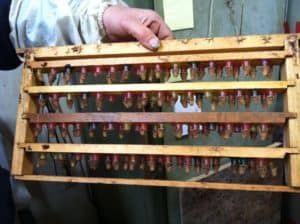

After spending about a month in California, I flew south to meet Jody Gerdts and travel around East Texas, Louisiana, and Mississippi for three weeks. While most of the bees in the country are in California for almond pollination, there are a few beekeepers that have or bring bees down to the South for producing the next generation of bees to sell. A number of the beekeepers the Midwest Bee Tech-Team works with migrate to the south for the winter, so we follow them. We visited nine beekeepers and did hygienic testing, and took samples for Nosema and Varroa for them. (Jody works on the Bee Squad at the University of Minnesota, helping hobby beekeepers keep bees or keeps bees for people or corporations that want bees, but don’t want to manage them. She volunteered to get out of the cold and help me for a few weeks.)

The South is kind of a magical place for a girl from the North. The weather is drastically different from the North, and because of the heat you get all sort of living things like alligators, snakes, armadillos, and such a gorgeous variety of fungi. The South also has really good weather for raising queens – starting to get really nice out in Late February and March. Beekeepers that migrate to the south really get going at the end of February, but some travel down earlier. One of the beekeeper’s daughters calls North Dakota her primary home, but she had never seen a Midwest winter until she went to college at the U of MN. When we were there, the weather averaged probably around 55 – 60 as a high and the bees were bringing in pollen.

One obstacle for the southern beekeepers is the plant yellow jasmine, Gelsemium sempervirens. It is poisonous to both honey bees and humans. It causes death of the developing bee brood, and, consequently, queen cells that are being made by the beekeepers. This year, it was fairly cold and rainy during much of the yellow jasmine bloom, so beekeepers are hopeful the bees didn’t bring back and store too much of the pollen.

Southern hospitality was a real thing for us down in the Deep South. People were very polite, kind, and welcoming. But people are people wherever you go, and there were a few bad eggs in the south. The craziest was one beekeeper was having issues with a guy spraying his hive entrances with an insecticide. This is still unresolved, but moving hives may be more difficult than keeping the yard due to land availability.
Overall, It was great to spend some time in the beautiful southern US and even better to see healthy hives with all the terrible reports of losses coming out of California.
